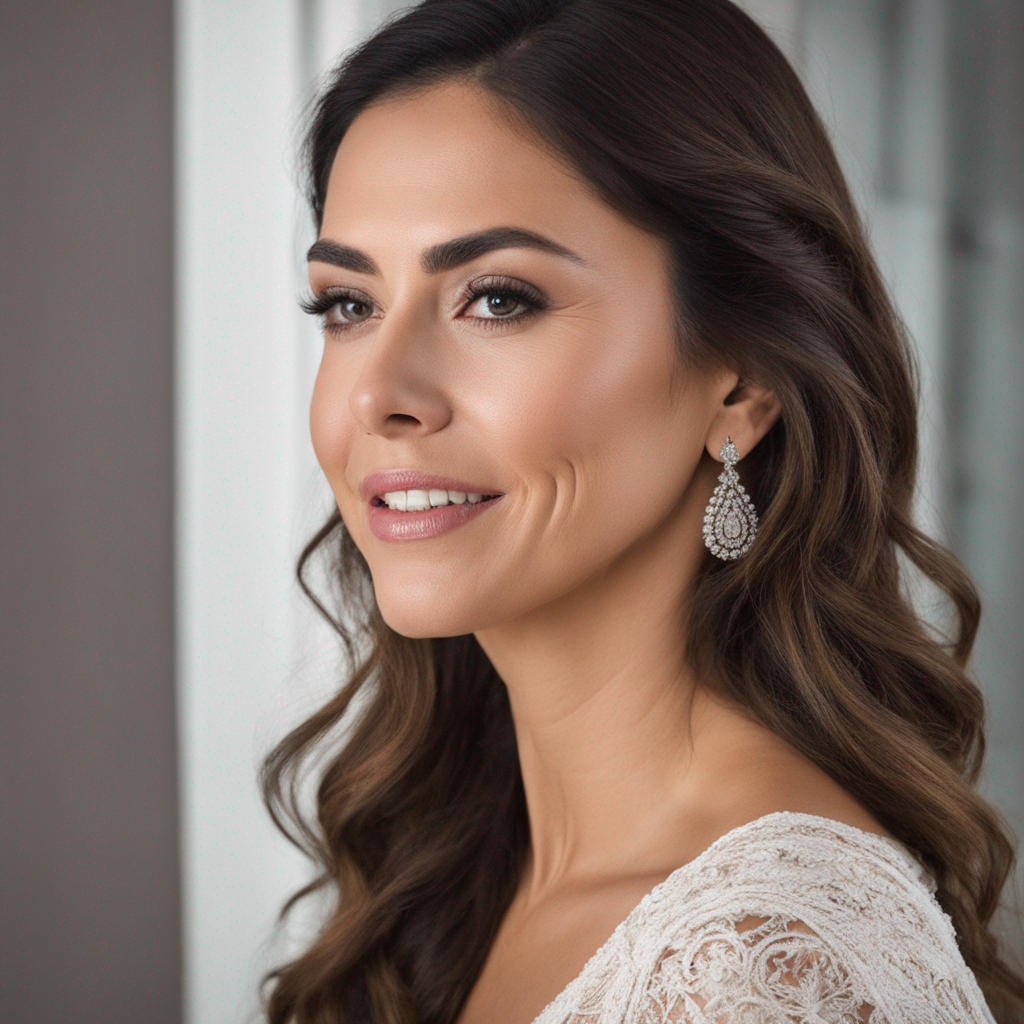Gone are the days when shedding stubborn body fat was a far-fetched dream, thanks to the power of a healthful diet and advancements in the liposuction procedure performed by skilled plastic surgeons. With liposuction procedures, a popular surgical method among plastic surgeons, becoming almost as commonplace as a trip to the dentist, the quest for aesthetic body changes and fat loss, specifically the removal of subcutaneous fat, has taken on new fervor. Body sculpting, a liposuction procedure, joins the fray, offering an alternative route to redefine your contours and achieve your aesthetic goals without going under general anesthesia, targeting subcutaneous fat for precise fat loss. Both body sculpting and liposuction promise to tackle that pesky double chin or persistent subcutaneous fat but take divergent paths in technique, recovery, and cost. People considering these procedures should be aware of the different parts involved and potential complications.
As we slice through the hype, it’s clear that these invasive body shaping and fat reduction methods have not only evolved but have sparked a revolution in personal aesthetics for people seeking an improved body contour. Liposuction procedure—once a buzzword among people seeking to reduce subcutaneous fat—is now sharing its spotlight with body sculpting’s less invasive allure, each vying for favor in our collective pursuit of physical perfection.
Understanding the Basics of CoolSculpting and Liposuction
CoolSculpting Defined
CoolSculpting is a modern approach to fat reduction. It’s a non-invasive body shaping technique, meaning no cuts or anesthesia are needed for people looking to improve their body contour and reduce body fat. This invasive body shaping technique allows people to use cold temperatures to freeze and destroy fat cells. Over time, your body naturally processes these cells.
Imagine placing a cube of butter in the sun. Slowly, it melts away just like fat does after CoolSculpting treatments, a popular invasive body shaping procedure for people. People can relax during invasive body shaping sessions as targeted areas with excess body fat receive cooling energy.
Liposuction Explained
Liposuction, a procedure sought by many people, is quite different; it’s an invasive surgical procedure that requires local or general anesthesia. A plastic surgeon performs invasive body shaping on people by making small incisions and inserting a tube called a cannula into the fatty tissue layers.
The cannula breaks up the fat, which is then sucked out by suction through the tube. Think of it as vacuuming dirt from your carpet—liposuction vacuums away unwanted fat from your body.
Mechanisms Compared
Both body sculpting and liposuction procedures aim to sculpt your figure, but they work differently.
-
CoolSculpting freezes fat without damaging skin or muscle.
-
Liposuction physically removes fat with immediate results but comes with more risks due to its invasive nature.
With liposuction, you’ll see changes right after surgery once swelling goes down. But with CoolSculpting, patience is key; results appear gradually over weeks as frozen cells are eliminated by your body’s natural processes.
Procedure Comparison for Body Contouring Options
Duration & Setting
CoolSculpting and liposuction have distinct differences. CoolSculpting is a non-invasive procedure. It takes about one hour per treatment area. Patients can read or nap during the session. There’s no need for an operating room.
Liposuction, however, is more involved. It requires an operating facility. The duration varies based on areas treated but often lasts several hours. Recovery time must also be considered.
Anesthesia Use
Anesthesia is another key difference between these procedures. Liposuction typically involves anesthesia, which could be local or general depending on the extent of fat removal and patient preference.
CoolSculpting does not require anesthesia at all. This means there’s less risk associated with sedation and a quicker return to daily activities post-procedure.
Onset of Results
Results timing sets these options apart too.
-
CoolSculpting shows gradual results as the body naturally eliminates frozen fat cells over weeks to months.
-
Liposuction results are immediate but come with swelling that needs time to subside before the final outcome is visible.
Pain and Discomfort Levels in Fat Reduction Techniques
CoolSculpting Comfort
CoolSculpting, a non-invasive fat reduction method, offers minimal discomfort. This procedure targets stubborn fat without surgery. Patients often feel a cold sensation followed by numbness. There’s no need for anesthesia or pain medication afterward.
Most return to daily activities immediately. Some might experience temporary redness or swelling. But these effects are mild and short-lived.
Liposuction Recovery
Liposuction involves removing excess fat surgically from the body. It requires incisions and anesthesia. Afterward, patients can expect more significant discomfort compared to CoolSculpting.
The recovery period is longer too. Bruising and soreness around treated areas are common post-operative experiences for several days or weeks.
Managing Discomfort
Both procedures have their own pain management strategies:
-
For CoolSculpting, over-the-counter pain relievers usually suffice if there’s any discomfort.
-
Post-liposuction may require prescription medication initially as directed by the surgeon.
Following your doctor’s advice is crucial for a smooth recovery in both cases.
Effectiveness and Results Timeline of CoolSculpting vs. Liposuction
Fat Reduction
Body sculpting and liposuction are popular fat reduction methods. CoolSculpting can reduce about 20-25% of fat in a treated area per session. Liposuction, on the other hand, can remove up to 5 liters of fat during one procedure, which may translate to a higher percentage depending on the individual’s body composition.
With CoolSculpting, patients often need multiple treatments for optimal results. Each session targets different areas or goes over previous ones for further reduction. In contrast, liposuction is typically a one-time procedure that addresses larger volumes of fat at once.
Results Timeline
The time it takes to see final results varies between these two procedures. After undergoing CoolSculpting, some changes might be noticeable as early as three weeks post-treatment. However, the most dramatic results generally appear after two months when your body has had enough time to process and eliminate the frozen fat cells.
For those who choose liposuction, initial swelling masks immediate changes but subsides significantly within a few weeks. The final contour will become evident once all swelling has resolved, usually around six months post-procedure.
Treatment Sessions
CoolSculpting often requires several sessions spaced out over weeks or months to achieve desired outcomes since each treatment only affects a portion of the targeted fat cells.
-
Initial consultation determines treatment plan.
-
Multiple sessions scheduled based on goals.
-
Gradual improvement observed with each session.
In comparison:
-
Liposuction is performed in one go.
-
It offers more immediate and significant changes.
-
No follow-up treatments needed unless revisions are required due to irregularities or patient’s desires for additional contouring.
Cost Analysis of Non-Invasive and Invasive Fat Removal
CoolSculpting Expenses
CoolSculpting, a non-invasive body sculpting method, involves freezing fat cells. Prices vary based on location and treatment area size. On average, each session may cost between $600 to $800. Multiple sessions are often needed for desired results.
Patients should consider the total price for a full treatment course. It’s not just one payment but several over time. Remember that touch-ups might be necessary to maintain or enhance results.
Liposuction Pricing
Liposuction is an invasive procedure with higher initial costs. A single liposuction surgery can range from $2,000 to $3,500, depending on the body part targeted.
However, these figures don’t include extra expenses such as:
-
Anesthesia fees
-
Facility charges
-
Post-operative garments
These additional costs can add up quickly.
Long-Term Considerations
When choosing between CoolSculpting and liposuction, think about long-term value too.
With CoolSculpting:
-
You may need multiple sessions.
-
Touch-up treatments could be required years later.
In contrast:
-
Liposuction usually requires only one surgery.
-
Results can last longer if you maintain your weight.
This means the long-term investment could differ greatly between the two options.
Overall Financial Impact
It’s crucial to factor in all potential costs when deciding on fat removal methods.
For CoolSculpting:
-
The average cost per session adds up over time with repeat treatments.
For liposuction:
-
Initial outlay is higher due to surgical and associated fees.
Always consult with professionals for precise quotes tailored to your needs and situation.
Candidate Suitability for Different Body Shaping Procedures
CoolSculpting Candidates
CoolSculpting is a non-invasive body shaping method. It freezes fat cells in targeted areas like the hips or upper arms. The ideal candidates have a BMI that indicates they are near their target weight but struggle with stubborn fat pockets.
Candidates should not see CoolSculpting as a weight-loss solution. Instead, it’s best for those who want to refine their shape. This procedure uses an applicator on specific areas where diet and exercise aren’t enough.
Liposuction Requirements
Liposuction is more invasive than CoolSculpting and involves a plastic surgeon using a cannula to remove fat from certain areas. To undergo liposuction, candidates must be in good health with stable body weight.
Surgeons assess patients’ overall health before recommending liposuction. They look at factors like skin elasticity and muscle tone. Ideal candidates often seek to remove larger amounts of fat than what CoolSculpting targets.
Health Considerations
Health conditions can affect which body shaping option is suitable. For instance, those with circulatory issues might avoid invasive procedures like liposuction due to increased risks during surgery.
Patients need honest discussions with surgeons about their medical history before choosing a procedure. Both options require individuals to maintain results through lifestyle choices post-procedure.
Side Effects and Recovery Periods Compared
CoolSculpting Effects
After determining the right procedure, it’s vital to understand the side effects. CoolSculpting can cause redness and swelling at the treatment site. Some clients also report bruising or a tingling sensation. These side effects are generally mild.
They typically resolve within a few days to weeks. Unlike more invasive procedures, CoolSculpting allows most people to return to daily activities immediately.
Liposuction Downtime
Liposuction involves surgery, so recovery is more intense. Patients need time off work and should avoid strenuous activity for up to six weeks. Post-surgery care includes wearing compression garments and managing pain with medication.
Swelling and bruising are common after liposuction but usually subside within a few months. The long-term care plan may involve follow-up appointments with your surgeon.
Long-Term Risks
Discussing long-term risks is important too. With CoolSculpting, rare side effects like paradoxical adipose hyperplasia could occur – where treated fat cells increase rather than decrease in size.
However, many patients experience no severe long-term issues from CoolSculpting. In contrast, liposuction can have risks such as infection or changes in skin sensation over time. Both treatments have differences in risk profiles that must be weighed against their benefits.
Invasive vs Non-Invasive Body Contouring Methods
Procedure Impact
Body sculpting and liposuction are popular for shaping the body. Each has different impacts on daily life.
CoolSculpting requires no incisions. It freezes fat cells away. After treatment, patients can often return to normal activities immediately.
Liposuction is more invasive. It involves small incisions and suction of fat cells. The procedure usually requires downtime for recovery.
Both methods aim to contour the body but differ in their approach and impact on your routine post-procedure.
Choosing the Right Procedure for Your Body Contouring Goals
Personal Goals
Before deciding between body sculpting and liposuction, consider your aesthetic goals. Body sculpting might suit those seeking minor adjustments. It often involves less downtime. Liposuction, however, can address larger areas of fat.
Think about what you want to change in your body contour. Do you aim for a slight refinement or significant reshaping? Your answer will steer your choice toward the right procedure.
Lifestyle Factors
Your lifestyle plays a crucial role in this decision as well. Can you afford time off for recovery? Liposuction requires rest post-surgery. Non-invasive techniques may allow quicker return to daily activities.
Assess how each option fits into your life rhythm. If taking extensive time off work isn’t possible, non-invasive treatments could be more practical.
Professional Advice
Consult with medical professionals before choosing a procedure. They can help determine which technique aligns with your treatment goals and health status.
Doctors evaluate factors like skin elasticity and overall health before recommending procedures. Their advice ensures that the chosen method is safe and suitable for you.
Long-Term Results
Consider not only immediate effects but also long-term outcomes when choosing a procedure. While non-invasive methods offer convenience, their results might be subtler than liposuction’s dramatic changes.
Understand that maintenance is key after either procedure; neither replaces the need for a healthful diet or exercise routine to sustain results over time.
Conclusion
Navigating the world of body contouring can be like finding your way through a maze, but you’ve now got the map. Whether you’re leaning towards the chill of CoolSculpting or considering the swift change liposuction offers, it’s clear that each path has its own set of signposts—cost, comfort, and recovery time. Picture your ideal outcome: do you value a non-invasive journey with gradual results, or are you aiming for a quick transformation despite the downtime?
Your body, your rules. It’s time to sculpt your decision based on what resonates with your lifestyle and goals. Don’t let indecision keep you from crossing the finish line. Reach out to a professional, grab their expertise like a baton, and sprint towards that personalized plan that’s just right for you. Ready to reshape your future? Take the next step and book a consultation today.
Frequently Asked Questions
What’s the main difference between body sculpting and liposuction?
Body sculpting typically refers to non-invasive fat reduction methods like CoolSculpting, while liposuction is an invasive surgical procedure that removes fat.
Is body sculpting or liposuction more painful?
Liposuction usually involves more pain and discomfort due to its surgical nature, whereas body sculpting techniques like CoolSculpting have minimal associated pain.
How long does it take to see results from CoolSculpting vs. liposuction?
CoolSculpting results can appear within a few weeks but may take several months for full effect. Liposuction results are visible immediately after swelling subsides, often in a few weeks.
Which costs more: non-invasive body contouring or liposuction?
Liposuction generally has higher upfront costs due to being a surgical procedure requiring anesthesia and possibly facility fees, while non-invasive options might be less expensive initially but could require multiple sessions.
Who is an ideal candidate for body sculpting procedures?
Ideal candidates for body sculpting are those close to their target weight who want to address specific stubborn fat areas without undergoing surgery.
Can you compare the side effects of CoolSculpting and liposuction?
CoolSculpting might cause temporary redness, swelling, or numbness. Liposuction’s side effects include bruising, soreness, and potential scarring since it’s more invasive.
How do I choose between body sculpting and liposuction for my goals?
Consider your tolerance for downtime, budget constraints, desired speed of seeing results, overall health condition—and consult with a professional—to make the best choice tailored to your goals.

















